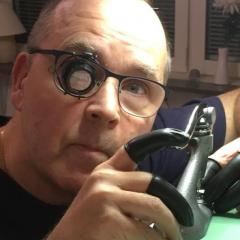ETA 2472 Oscillating weight too much end-shake
-
Recently Browsing
- No registered users viewing this page.
-
Topics
-
Posts
-
Welcome to the forum, enjoy. I have a varimatic that went out of sequence because it’s hydronic oil ran very low. Must admit it’s still in my garage just know time to fix it. Purchased a cheap Indian Junta/ sonic Pearl as a stop gap a few years ago and it still performs perfectly so no incentive to fix the Varimatic.
-
The plate is OK, thanks. It seems the answer to my question is that this is a 'hack' & for me another reminder that in general, one won't be the first person to be tinkering with an old timepiece!. As you day, I've been fortunate to have gotten some good advice and, just as important, encouragement. I've been lucky then not to have the balance spring break as a result of my novice 'ministrations' - but I did remember to 'stroke' rather than bend per se. The clock is of sentimental value to the owner so I'm relieved to have now got it running to time with the support & encourage of forum members like yourself.
-
By storminwestie · Posted
Recently purchased a L&R Varimatic knowing that the piston does not fully rise in the cylinder. The likely cause is air in the system. The manual calls for using a bleeder cup, which is as rare as hen's teeth.Does anyone have any experience with this issue and if so, how did they resolve it? -
By Neverenoughwatches · Posted
Thanks ww, its maybe not as much of a bodge trick that i thought it was.
-








Recommended Posts